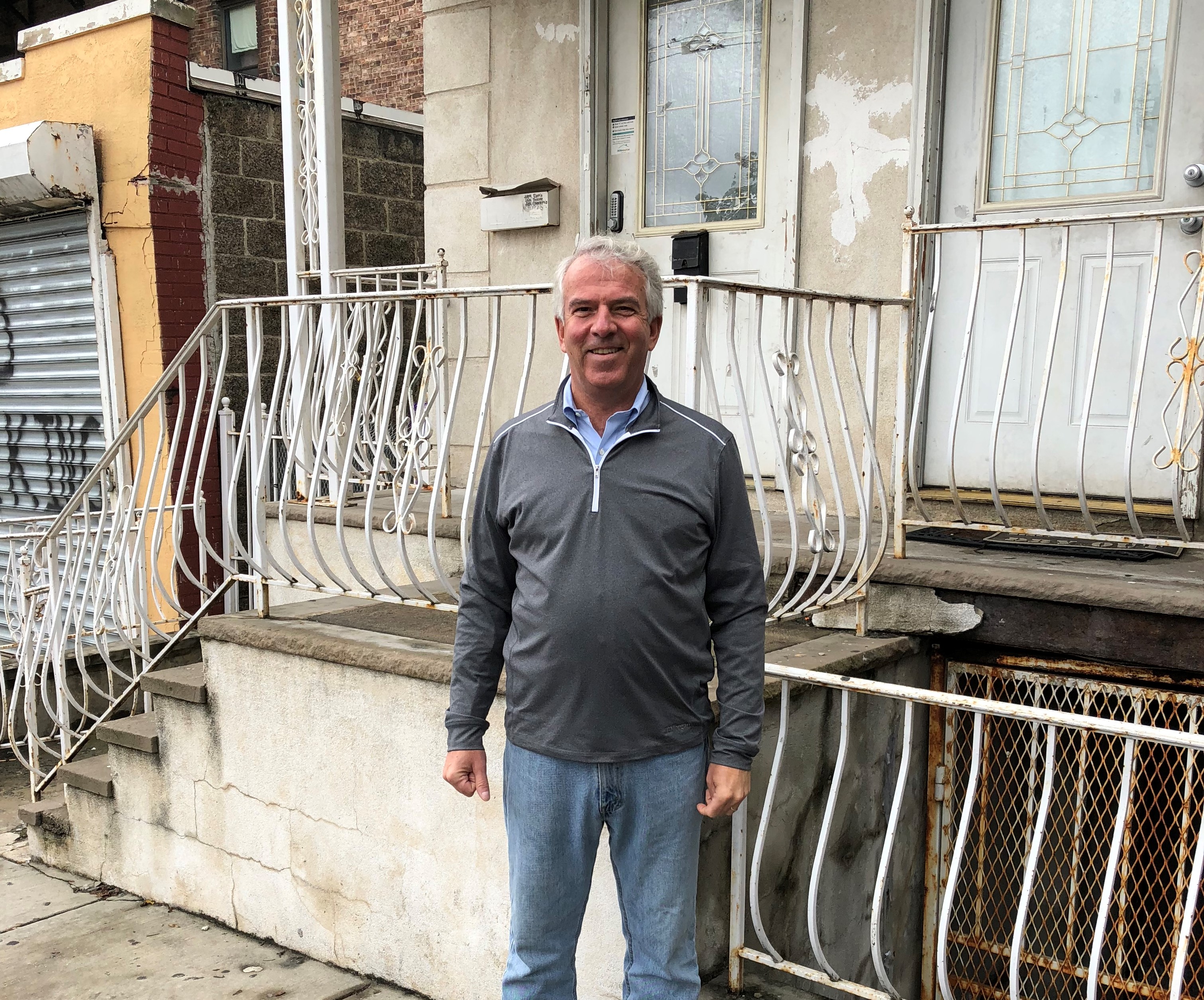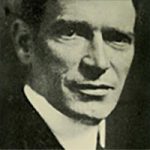Union City: Walking the Hudson County Origin Town with Hugin - Back to the 1974 School Board Election

Bob Hugin and I are walking through his old neighborhood in Union City when he spotted a familiar-looking wall on the sidewalk.
"This was a great place to play flies up," he said.
Flies up?
Yes, this was one of the many variations of baseball played in urban America, or more precisely perhaps, in Hudson County, circa the 1960s.
You needed a wall and a spaldeen (the legendary slang term for a rubber ball made by the Spalding Co.). The "batter" threw the ball against the bottom of the wall and achieved a single, double, triple or home run depending on how far it travelled - unless it was caught by a defender. The key was to find a wall with a protruding ledge or crevice; hit that squarely with the spaldeen (no easy task) and you were golden.
Union City, the locale for this jaunt along memory lane, may have 50,000-plus people wedged into an area 48 blocks long and about seven or eight blocks wide, but it is often overlooked. Some confuse it with Union Township in Union County. Of the towns on its borders, Jersey City is much more prominent and Hoboken has become trendy.
But through sheer coincidence, the two candidates for U.S. Senate, Hugin and Robert Menendez, the Democratic incumbent, grew up in Union City, each graduating from public high schools on the opposite ends of town in 1972. I grew up in Union City as well, also at the same time.
So, I asked Hugin to take a walk with me through his old stomping grounds. (A similar request has been made of Menendez).

The one-time pharma executive showed up wearing jeans, a zippered sweatshirt and sneakers. He chose to begin our journey at First Street Park on the city's southern border. This is where he played Little League Baseball and also tennis. The courts are now paved, but the candidate recalls they used to be red clay, giving them a professional
look and feel.
"You could spend all day here," he recalled.
Hugin is in good shape, so we walked briskly up Bergenline Avenue. A former paperboy with the now-defunct Hudson Dispatch, Hugin still remembers the names and addresses of some of the people to whom he delivered.
We saw the "flies up wall," and soon came to his old family home on 12th Street off of New York Avenue. A few things popped out. One window was broken and another one showed off a Phil Murphy campaign sign - from last year.
Hugin was most interested to talk about the families who lived around him, rattling off their names - Lopez, Rigoni, O'Brien, Hauser.
Stop and look at the names again - Lopez, Rigoni, O'Brien, Hauser.
Union City at that time was diverse before the term, "diversity" was coined.
Off we went to Hudson School, a relatively ancient edifice a block or so from the cliffs overlooking the Hudson River and the New York skyline. We retraced the seven or eight-block path Hugin said he routinely took all those years ago. (The city is so compact, there is no school busing.)
"This is kind of sad," he said as we arrived and looked at the rear of the school. There used to be a school yard there. Not much really. Two basketball hoops and a place to play ball. Now, there was a new addition that consumed all of what used to be open space. I attended Hudson as well - Hugin was a year behind me - and concurred with his
sentiments.
Looking for authenticity, we walked around the block to the front of the school. This looked more like it was - just another large brick building on the street. Hugin pointed to the second floor and remembered, "That was the principal's office - Albert F. Pardee."
Yep. Albert F. Pardee. All names tend to sound a bit regal when you throw in a middle initial and this one was no exception.
Regardless of age, many remember their elementary school teachers, or at least some of them. During our stroll, Hugin asked me about my teachers and there was an obvious overlap. He brought up such names as Testa, Lippert, Topp and Baer. These names mean something only to a select few, but to catch a sense of the nostalgia of the day, anyone can substitute the names of teachers they remember and think of how things were.
In that long-ago world of no video games or computers, sports was a constant companion. You came home from school, changed your clothes (you dressed up for school in those days) and went out to play - whatever.
An avid sports fan, Hugin still recalls, as do I, some of the city's best athletes of his youth. There was Richie O'Connor, a basketball player at St. Michael's High School. who played at Duke; Don Fanelli, a star football player for St. Joseph's High School in nearby West New York, who played at Cornell, and onetime Emerson High School basketball standout Bob Fazio, who played collegiately at St. Peter's.
Hugin himself played baseball for Emerson and as we walked past the old high school (it's now a junior high) he remembered exactly where the team photo was taken. He also recalled some of the players didn't take the photo shoot all that seriously. Go figure.
Soon, we were at the site of another urban game of legend - stickball.
Next to the old St. Michael's High School on 15th Street was a larger than normal alleyway with a chalk or painted strike-zone on the back wall. This, said Hugin, was where he played stickball.
There are various versions of a game a young Willie Mays reportedly played with kids in Harlem. In this version, the batter stands astride the strike zone and takes his cuts. If he doesn't swing, the ball (a spaldeen, of course) is called either a ball or strike depending on where it hits the wall.
Generally, the batter hits the ball across the street, which invariably means it goes on someone's front porch or in their front yard. It helps to have understanding neighbors, but that's no guarantee.
The alleyway of Hugin's long-ago stickball game is also next to what was once the Union City Public Library. Now, it's called the William V. Musto Cultural Center.
A few things of note here. One is that the man everyone knew as Bill Musto was a crook.
Notwithstanding his name on a building, Musto, who was both mayor and a state senator, spent time in federal prison on corruption charges.
Musto was also the man who gave Menendez his start in politics when the young 20-year-old was tabbed by the Musto organization to run for the school board in 1974. It is, of course, just as well known that Menendez eventually testified against Musto and helped send him to prison.
Hugin was attending Princeton in 1974. I asked him if he recollected the 1974 school board election. It was big news locally at the time, because this was the first school board election the city ever had.
Menendez, in fact, was instrumental in making that happen through a petition drive.
What I really was asking was whether Hugin voted for Menendez. He thought a bit and finally said, he didn't remember voting in Union City in 1974.
Hugin has been running frequent TV commercials and perhaps because of that, a few people said "hello" to him as we sauntered around. Hugin said he's confident that the race is tight - a surprising development in a very "blue" state. (Our interaction last week was before a Stockton University poll revealed that the race is indeed tight; in fact it is statistically a dead heat.)
We were headed now towards a respite at the Four-Star Diner, a place that has been around as long as Hugin has. What did growing up in Union City mean to him?
"Everybody was equal," he said. "Everybody was the same. If you wanted to get ahead, it was hard work that got you ahead."
Hugin actually said something quite similar when he announced his candidacy back in February. One should not question his sincerity, but this really is a romanticized version of things, as it ignores political reality.
Many of the teachers Hugin remembers likely needed political connections to get their jobs and some had to work politically to keep them, or to get a promotion. That probably included Albert F. Pardee.
Many people work hard in Hudson County, but if you're on the wrong side politically, you don't get ahead, at least in the public sector.
Menendez, who started off in politics on the right side of that political divide, also is hammering the Republican for opposing the admission of women and gays into Princeton University eating clubs.
That was a long time ago, but Hugin kept up the fight even after he graduated.
By now, we have reached the diner after having walked more than a mile, passing the old St. Michael's Monastery, which in Hugin's day offered a mostly dirt field in the rear for football and baseball playing. To get a better view of what now is a turf field, the
candidate jumped atop a ledge and peered over a high fence that wasn't around 40 years ago.
We are finally seated at the diner amid a number of Hugin campaign staffers and supporters.
The candidate orders a Caesar Salad with chicken and says that views change over time.
He says he promoted more women than men while running the drug company, Celgene.
He knows Menendez will keep bringing up Princeton, but says, "I am very comfortable with who I am."





